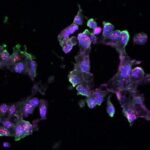
In the evolving landscape of biomedical research, the intersection of neonatology and physician-scientist careers presents a critical arena for examining equity and success. A recent comprehensive study spearheaded by Horowitz, Good, Machut, and colleagues delves into the experiences of neonatologist physician-scientists funded by the National Institutes of Health (NIH), offering an unprecedented exploration into how factors of equity influence career trajectories and research outcomes. This analysis not only sheds light on structural challenges within the field but also illuminates pathways that can foster inclusiveness and sustainable success for early-life medicine researchers.
Neonatology, the specialized branch dedicated to the care of newborn infants—especially the ill or premature—has long relied on the dual expertise of physician-scientists who combine clinical acumen with research innovation. The NIH, as a premier funder of biomedical research in the United States, stands as a bellwether entity reflecting systemic trends in grant allocation, career support, and academic advancement within this niche. Horowitz and colleagues’ work meticulously quantifies and qualifies disparities faced by these medical researchers, underscoring how equity intersects with funding acquisition, publication success, and leadership roles in neonatology.
Central to this study is the recognition that physician-scientists confront unique professional challenges. They balance demanding clinical responsibilities with the rigorous demands of hypothesis-driven research. This duality often places neonatologist-scientists at a crossroads: the pursuit of innovation in neonatal care competes with the time constraints and pressures of clinical duties. The NIH’s support, therefore, is not merely financial but represents an endorsement of one’s potential to push neonatal medicine forward. The data analyzed in this work reveal nuanced patterns regarding which demographics are successfully navigating this balance and which face systemic barriers.
.adsslot_nYkIxM4SrT{ width:728px !important; height:90px !important; }
@media (max-width:1199px) { .adsslot_nYkIxM4SrT{ width:468px !important; height:60px !important; } }
@media (max-width:767px) { .adsslot_nYkIxM4SrT{ width:320px !important; height:50px !important; } }
ADVERTISEMENT
The investigation uses a robust dataset from NIH funding cycles spanning recent years, cross-referenced with demographic variables, institutional support mechanisms, research output indices, and professional advancement metrics. The emergent picture is stark: while funding success is attainable, inequities remain prevalent along axes of gender, race, and institutional prestige. Female neonatologist physician-scientists, for example, encounter lower funding rates and fewer leadership opportunities compared to male counterparts, reflecting broader cross-disciplinary trends but with unique neonatology-specific implications.
Building on these findings, the authors elaborate on the multifactorial nature of success in this specialized scientific community. Beyond raw grant success rates, mentoring availability, work-life integration, and representation in influential academic forums emerge as vital contributors. The NIH-sponsored physician-scientists who thrive often benefit from supportive institutional cultures that recognize and accommodate the constraints inherent in clinical research roles. Conversely, those operating in less resource-rich or inflexible environments face compounded obstacles, revealing how institutional equity directly impacts research vitality.
An important technical dimension of this research pertains to the methodologies used to quantify “success” and “equity.” The study employed mixed-method approaches, combining quantitative analyses of grant portfolios and publication bibliometrics with qualitative interviews capturing lived experiences. This blend enables a granular understanding of how subjective perceptions of support and systemic barriers manifest within objective career outcomes. Such methodological rigor bolsters the study’s implications for policy and funding reforms within neonatal research communities.
In tracking publication success, the study highlights disparities in the distribution and impact of scholarly works attributed to NIH-funded neonatologist researchers. Citation indices, journal impact factors, and collaborative networks serve as proxies for scientific influence. Here too, systemic discrepancies surface, particularly among underrepresented minorities whose research visibility and integration into broader academic networks lag behind national averages. Such disparities emphasize the necessity for proactive measures to ensure equitable dissemination and recognition of research contributions.
The implications of this research extend beyond the academic milieu; they touch on the very nature of neonatal care advancements. Equity in research funding and career progression correlates with diversified perspectives in scientific questions, innovative approaches, and translational outcomes that shape clinical protocols. When physician-scientist pipelines disproportionately exclude certain groups, the field risks stagnation and loss of creativity essential for addressing complex neonatal health challenges, including preterm birth complications and neonatal neurodevelopmental disorders.
Horowitz et al. advocate for systemic interventions aimed at dismantling structural inequities. Recommendations include tailored mentorship programs that address intersectional challenges, flexible grant mechanisms accommodating clinical workloads, and institutional policies fostering inclusive leadership. Enhancing transparency in NIH funding decisions to counter implicit biases and promoting data-driven accountability measures within academic centers are also underscored as critical steps forward.
Another crucial aspect illuminated involves the role of early career development opportunities. The data reveal that early-career neonatologist physician-scientists from underrepresented backgrounds are less likely to receive bridge funding or be included in high-impact collaborative studies, which are often prerequisites for sustained NIH success. This points towards a need for targeted funding instruments designed explicitly to support these emerging scientists, thereby constructing a more equitable and robust research community.
The study’s authors also examine how contemporary challenges like the COVID-19 pandemic exacerbate existing disparities. Clinical demands have escalated, disproportionately affecting physician-scientists whose research time is severely curtailed. Institutional responses to such crises often lack equity-focused mitigations, amplifying career vulnerabilities among minorities and women. The authors’ findings thus resonate with wider academic discourses emphasizing the importance of resilient and inclusive research infrastructures.
Beyond the immediate neonatology sphere, these insights contribute to shaping national biomedical research policies. The NIH itself is undergoing introspection and reforms to better align funding practices with equity goals. This study functions not only as a diagnostic tool but as a strategic blueprint guiding how research sponsors and academic institutions can collaborate to cultivate diverse, innovative, and sustainable physician-scientist workforces.
Crucially, this investigation reveals that equity is not a zero-sum proposition. Rather, fostering inclusivity and success for a broader pool of neonatologist scientists enhances collective scientific output and accelerates translation of discoveries into clinical improvements. This paradigm shift demands a cultural change across academic medicine, from recognizing unconscious bias to restructuring reward systems that traditionally privilege narrow definitions of success.
In sum, the research presented by Horowitz, Good, Machut, and colleagues delivers a landmark analysis of equity and success within NIH-funded neonatologist physician-scientist careers. Its findings are as urgent as they are illuminating, identifying persistent gaps and actionable solutions to build a more just and effective biomedical research ecosystem. As neonatal medicine continues to push frontiers in saving and improving newborn lives, ensuring the vitality and inclusiveness of its scientific workforce must be paramount.
As the scientific community digests these revelations, the call to action is clear: systemic transformation, grounded in data and human experience, is essential for unlocking the full potential of neonatologist physician-scientists. Only by aligning equity with excellence can the promise of cutting-edge neonatal research be fully realized—ultimately transforming outcomes for the world’s most vulnerable patients.
Subject of Research: NIH-funded neonatologist physician-scientists; equity and success in biomedical research careers.
Article Title: NIH-funded neonatologist physician-scientists: an exploration of equity and success.
Article References:
Horowitz, E.N., Good, M., Machut, K.Z. et al. NIH-funded neonatologist physician-scientists: an exploration of equity and success. Pediatr Res (2025). https://doi.org/10.1038/s41390-025-04224-5
Image Credits: AI Generated
DOI: https://doi.org/10.1038/s41390-025-04224-5
Tags: academic advancement for physician-scientistscareer trajectories in neonatologydual expertise in clinical and research settingsequity in biomedical researchfunding disparities in medical researchinclusiveness in healthcare researchleadership roles in neonatologyNIH-funded neonatologist physician-scientistspathways to sustainable success in medicine.research outcomes in neonatologystructural challenges in early-life medicinesystemic trends in grant allocation



